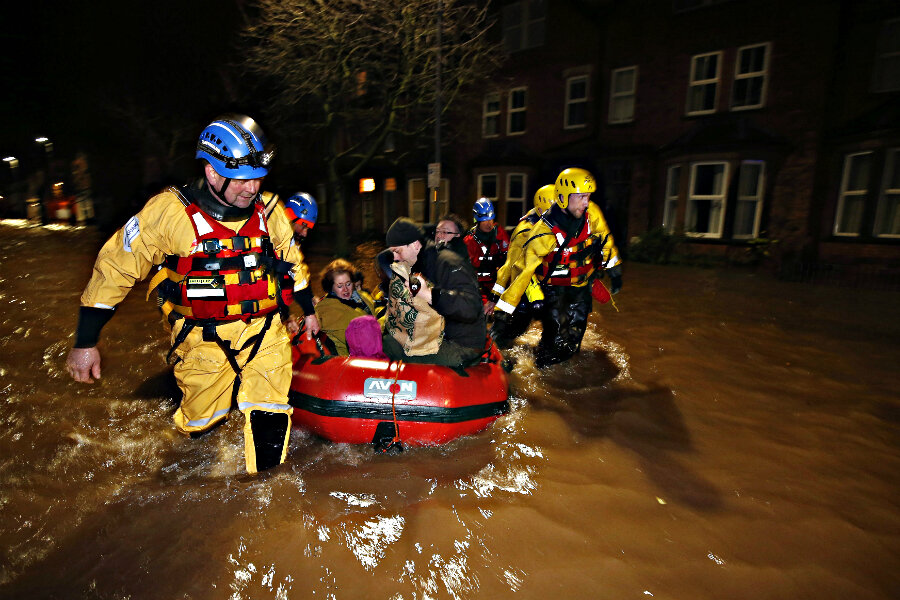Storm Desmond batters Britain. How did flood prevention measures hold up?
Loading...
A record rainfall has deluged parts of Britain, leading to at least one death. Forty schools are closed, and 55,000 people remain without power.
On Monday, British Prime Minister David Cameron visited parts of North West England that have faced the brunt of the floods, where rescuers have been extracting people from waterlogged residences.
His trip coincides with growing scrutiny of the 45 million pounds spent on flood defense that seemingly failed to protect Cumbria, the county that faced the worst of the floodwaters, from a month’s worth of rainfall (13.5 inches) in just 24 hours.
While visiting one flooded home in Carlile, Cameron said the damage was “horrific” and promised to reassess flood defenses.
Many have been quick to compare this latest storm to the major rainfall that battered Britain in January of 2005 which prompted heavy investments in flood protections, though it seems this storm may be worse. Environment Secretary Liz Truss told The Associated Press the towns and cities plagued most by the recent rainfall are facing water levels 20 inches higher than during the 2005 floods. She added that extreme weather events like this latest flood are "consistent with the trends we're seeing in terms of climate change."
Local leaders have called for an investigation to find out why the flood defenses didn’t do more to protect the properties, but Floods Minister Rory Steward told the AP that the defenses played a crucial role in slowing down the flow of the water to buy more time for evacuations.
"When you face, as we have now, probably the highest rainfall we have ever had in the United Kingdom, it is going to come over the top of defenses," he said. "But what the defenses do do is they slow it down. It gives us more time, it's given people here more time to evacuate safely and it's meant that there's less water on the streets than there would have been if we hadn't had that defense in place."
The BBC spoke with one survivor who expected his new flood defenses to only let in a few manageable leaks:
Keswick resident Rich Gale experienced previous floods in 2005 and 2009, but said he had felt "reasonably safe" since the Environment Agency extended the town's flood defence wall and he added protection to his own home.
But he said: "We stayed in our house because after the 2009 flood we bought flood defences for our home so we thought we'd better stay in and try and mop up any leaks that come in, but we just got overwhelmed and we ended up leaving our house."
The military has been helping evacuate residents, while the main rail line between England and Scotland will likely remain closed at least until Wednesday.
The same storm system battered southern Norway, causing floods that have devastated properties and shut down roadways. According to Iris Straume of the Norwegian Meteorological Institute, this was “the worst storm in 150 years.”
This report contains material from The Associated Press.





